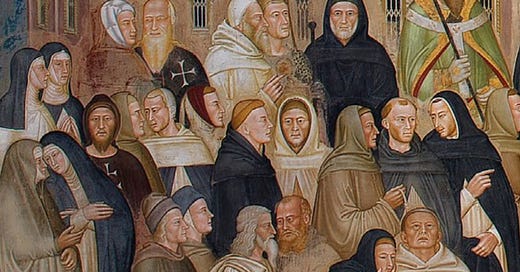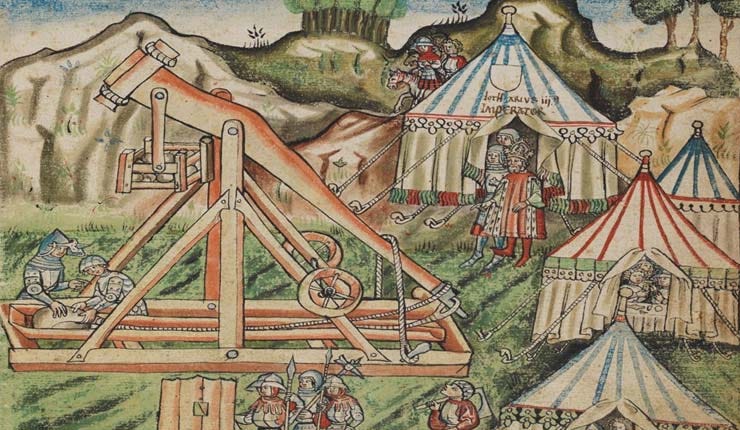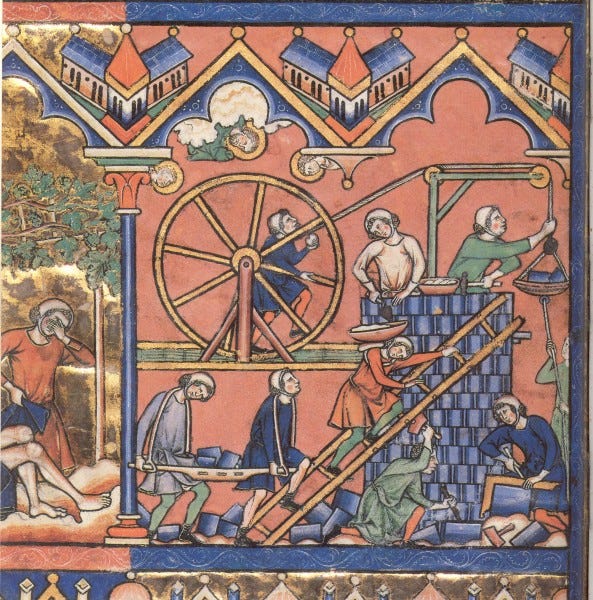Academic book on scholastic learning institutions
Review of The Medieval University: Masters, Students, Learning by Helene Wieruszowski
This is a quick overview of the formation of the medieval scholastic university, with a lot of period documents appended. It was an unprecedented as an institution and it led directly to the modern university today. While their limitations are well known – e.g. the impracticality of arguing how many angels could dance on the head of a pin – they were fundamental innovations of their time.
As a spontaneous movement, with students congregating with masters to look at various subjects, a series of universities were founded in Bologna, Paris, and Oxford. It was the beginning of the Gothic Era, one of fantastic expansion on a number of levels, i.e. economic, technological, and intellectual. The traditional educational institutions of the time – monasteries – were viewed as outmoded, self-referential as based on Bible studies and wholly without originality of inquiry.
The ideas in the air in the early Gothic Era were stimulated by the rediscovery of the logic of Aristotle, primarily through translation of Arab texts. Aristotle offered a new way of looking at things via a methodology that could incorporate new ideas as well as observations. There was also medicine, Roman law, scholastic theology, and Aristotelian metaphysics, often in specializations in a given city. Characteristically, the major universities were connected to cathedrals, which were run by corporate bodies rather than a single clerical authority, so multi-polar rather than under the control of a single individual and avowedly cosmopolitan, teaching in Latin.
Gradually, cities and lesser churches began to get involved in their administration, academic standards, regulation, orthodoxy, and status. As there was a great influx of scholars and students, they stood apart from normal citizens, subjecting them at first to abuse due to their lack of legal status and later as privileged, semi-clerical personnel once recognized by the local authorities and/or sanctioned by the papacy. Eventually, scholastic universities came to be regarded as prestige-generating institutions and became a fashion for princes to sponsor, leading to their proliferation. They also evolved standards for the practical training that students were supposed to learn for all variety of careers as well as allowed a modicum of debate of cutting-edge subjects, i.e. a staging ground for new ideas. Notably, though there were many poor students who used them as a way to advance themselves, the universities were not much influenced by the growing bourgeoisie.
Related reviews:
How Europe became Europe
This wonderful book is about the end of the Dark Ages, when trends were aligned in such a way that Europe finally began to overcome the long decline and chaos that followed the Roman Empire's disintegration. During this period (950 to 1350 CE), the vast migrations and fluidity of the early middles ages ended decisively, allowing stable states, a reforme…
High points of medieval culture and thought
The scholastics get a bad rap: in both popular media and serious scholarship, they’re viewed as hopeless fools who reason about strange, non-sensical esoterica, jumps of twisted logic that no one in their right mind would be interested in. Indeed, they are portrayed as simply doggedly memorizing these things to no end.
Gothic technological revolution
This is a dense, brief history on how technological change impacted late medieval society. The historical backdrop to the technological revolution takes place from the beginning of the Gothic era, when the Dark Ages had given way to a period of rapid change (1150-1375). This is when stable cities began to flourish in relatively greater safety, vast rang…







